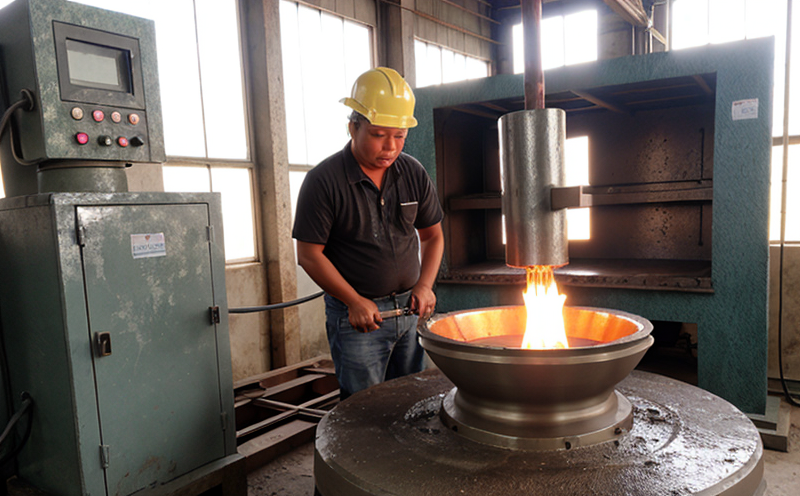ASTM E446 Reference Radiographs for Steel Castings
The ASTM E446 standard provides a set of reference radiographs to be used as the basis for evaluating the internal structure and defects in steel castings. This service is essential for ensuring that castings meet the highest quality standards, thereby enhancing product reliability and safety.
Steel castings are widely used in various industrial sectors including automotive, aerospace, and power generation due to their ability to produce complex shapes and high-strength components. The integrity of these castings can significantly impact the overall performance and longevity of end products. ASTM E446 reference radiographs serve as a critical tool for quality assurance by providing a consistent method to inspect steel castings.
The ASTM E446 standard defines specific parameters for the production of reference radiographs, including exposure settings, film selection, processing techniques, and defect classification criteria. These radiographs are used by inspection technicians to compare the internal structure of the casting against these references, thereby identifying any potential defects or inconsistencies that may compromise the integrity of the component.
The process begins with careful preparation of the casting sample to ensure it is representative of the production batch. The sample is then exposed using specific radiographic techniques and processed according to ASTM E446 standards. Once developed, the radiograph is evaluated by trained professionals who compare its characteristics against the reference radiographs provided in the standard.
The use of ASTM E446 reference radiographs ensures that all castings are inspected consistently across different facilities and operators. This uniformity helps maintain high-quality standards and reduces variability in inspection results, leading to more reliable products.
Moreover, this service supports compliance with international quality and safety regulations, ensuring that the manufactured components meet industry best practices. By leveraging ASTM E446 reference radiographs, manufacturers can enhance their reputation for delivering dependable and safe products, which is crucial in sectors like automotive and aerospace where component failure could have severe consequences.
Our laboratory adheres strictly to ASTM E446 standards, ensuring that the produced reference radiographs are accurate, reliable, and consistent. We employ experienced professionals who utilize state-of-the-art equipment to deliver high-quality results. Our commitment to precision and accuracy is reflected in our ability to produce detailed and clear images that facilitate precise defect detection.
Scope and Methodology
| Parameter | Description |
|---|---|
| Exposure Settings | Specific radiographic exposure settings are outlined in ASTM E446 to ensure consistent quality. |
| Film Selection | The type of film used for producing reference radiographs is specified by the standard. |
| Processing Techniques | Standardized processing techniques are prescribed to maintain the integrity and clarity of the images. |
| Defect Classification Criteria | The criteria for classifying defects in steel castings using reference radiographs are clearly defined by ASTM E446. |
Benefits
- Enhanced quality assurance through consistent inspection methods.
- Improved compliance with international standards and regulations.
- Increased reliability of steel castings, leading to safer end products.
- Precise defect detection supported by standardized reference radiographs.
- Reduction in variability among different inspection facilities and operators.
- Support for industry best practices ensuring product consistency.
Use Cases and Application Examples
The ASTM E446 reference radiographs are widely used in various applications across different industrial sectors. For instance, in the automotive industry, these radiographs help ensure that critical components like engine blocks and transmission casings meet stringent quality standards.
In aerospace manufacturing, where reliability is paramount, ASTM E446 ensures that intricate castings such as turbine blades are free from defects that could compromise safety. The power generation sector also benefits from this service by ensuring the integrity of large-scale components used in generating electricity.
The process begins with careful preparation of the casting sample to ensure it is representative of the production batch. The sample is then exposed using specific radiographic techniques and processed according to ASTM E446 standards. Once developed, the radiograph is evaluated by trained professionals who compare its characteristics against the reference radiographs provided in the standard.
Our laboratory adheres strictly to ASTM E446 standards, ensuring that the produced reference radiographs are accurate, reliable, and consistent. We employ experienced professionals who utilize state-of-the-art equipment to deliver high-quality results. Our commitment to precision and accuracy is reflected in our ability to produce detailed and clear images that facilitate precise defect detection.





